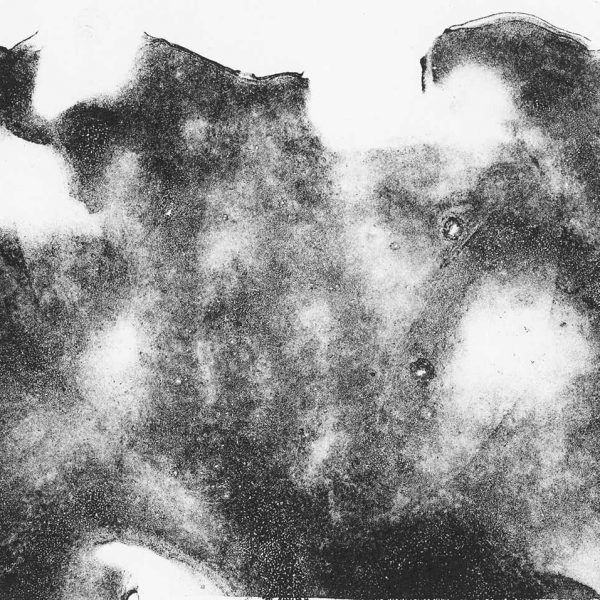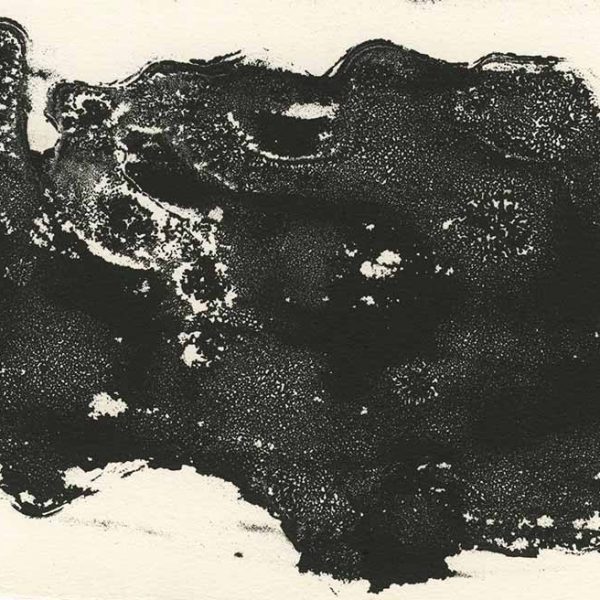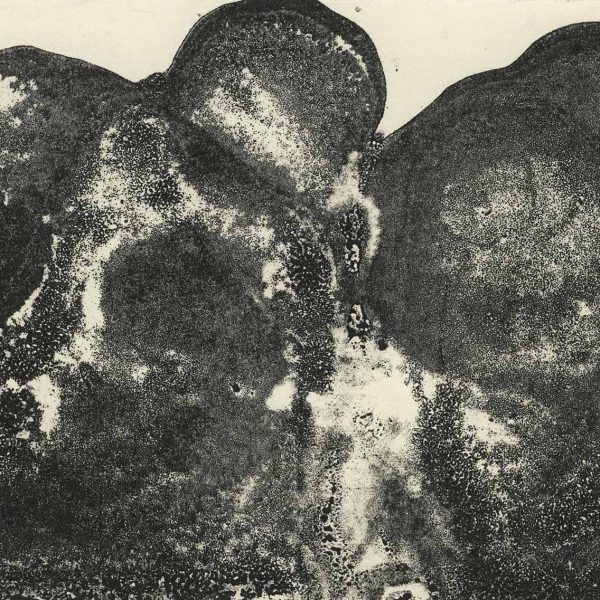Shellac wash
Materials:
- Gum arabic
- Nitric acid
- Turpentine
- Shellac solvent
- Asphaltum
- Shellac
- Rosin and talc

Shellac is an excellent drawing material. Even a thin layer adheres to the lithographic stone causing full blackening of the area. Dissolved in alcohol (shellac solvent is almost pure ethyl alcohol) it patterns in characteristic, rounded and organic forms filled with fine, wrinkled texture.
After drying shellac adheres so strongly to the lithographic stone that you can print directly from it (without removing it in a subsequent processes).
Dissolve shellac in alcohol (the same substance that is often used after washing the drawing after pickling to compensate for the grease equivalent on the surface and to improve the adhesion of the ink). Pour it on a well-grained lithographic stone.
Let the wash dry completely (several hours, one day). Afterwards the etching substance should be poured directly on the drawing. Depending on the thinning of shellac, we manipulate the power of the etching solution. The thicker layers of wash will not be over-etched, the delicate, barely visible ones need to be etched, because during the printing process they can get darker over time.
After etching, the image do not have to be washed away. You can damp and roll up the ink immediately after being washed with water.



